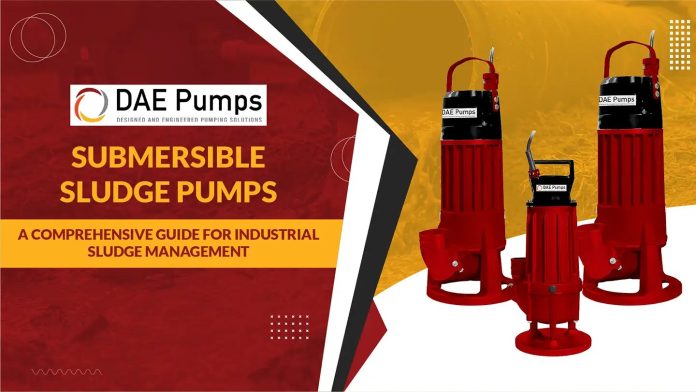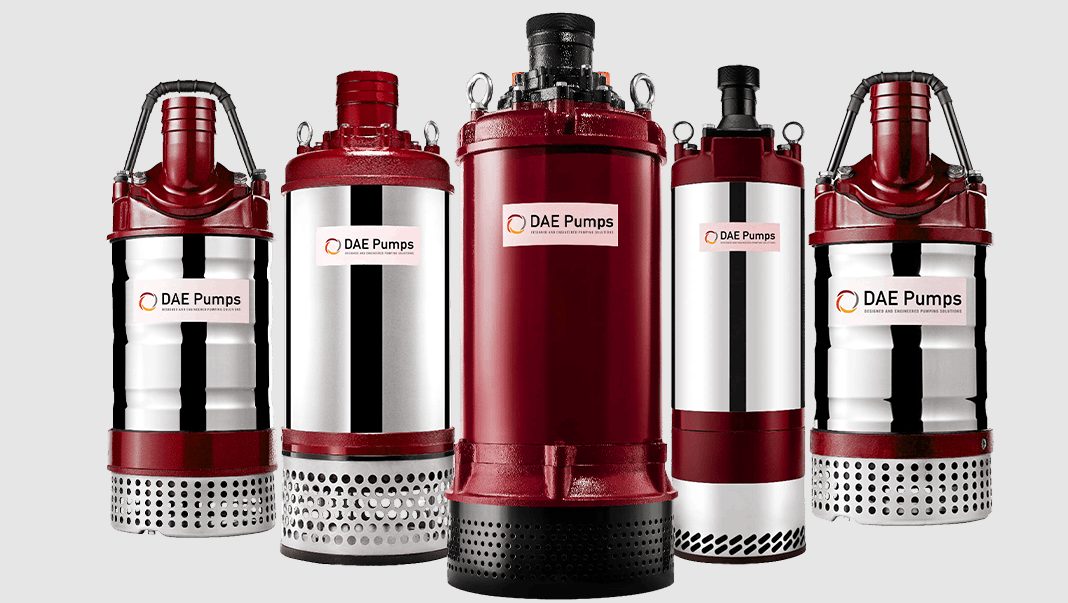Submersible sludge pumps play a crucial role in various industries, offering an efficient and reliable solution for handling thick, viscous sludge and wastewater. These specialized pumps are designed to operate while submerged in liquids, making them ideal for environments where traditional pumps might fail.
In this guide, we’ll explore the features, applications, and benefits of submersible sludge pumps, highlighting their importance in various industries, including wastewater treatment, mining, construction, and others.
Table of Contents
What Are Submersible Sludge Pumps?
Submersible sludge pumps are a type of pump designed to be fully submerged in the sludge or wastewater they are tasked with pumping. Unlike standard pumps, which are typically positioned outside of the liquid, submersible pumps operate within the fluid, making them ideal for environments where a pump needs to be placed in a tank, pit, or reservoir.
These pumps are constructed with robust materials to withstand the abrasive nature of sludge, which can contain solid particles, chemicals, and other contaminants. Submersible sludge pumps are commonly used in wastewater treatment plants, construction sites, mining operations, and other industries that generate large quantities of sludge.
Key Components of Submersible Sludge Pumps
To understand why submersible sludge pumps are so effective, it’s essential to look at their key components. These pumps are specifically designed to withstand the harsh environments in which they operate, providing long-lasting and reliable performance.
- Motor and Impeller Design: A submersible sludge pump’s motor is typically contained within the pump body to protect it from damage by water or sludge. The impeller, which is responsible for pushing the liquid, is often made of harder materials to resist wear and tear caused by abrasive particulates in the sludge.
- Seals and Bearings: To ensure the pump continues to operate efficiently, submersible pumps are equipped with high-quality seals and bearings. These components prevent leakage of liquids and protect the internal mechanisms from the corrosive and abrasive nature of the sludge.
- Corrosion-Resistant Materials: Many submersible sludge pumps are made from materials like stainless steel or cast iron, which offer resistance to corrosion. This makes them suitable for use in both water and wastewater treatment applications, where pumps are often exposed to harsh chemicals and corrosive elements.
Types of Submersible Sludge Pumps
There are several types of submersible sludge pumps, each designed for specific applications. Understanding the differences can help businesses select the most appropriate pump for their needs.
- Heavy-Duty Sludge Pumps: These pumps are designed for large-scale industrial operations where the sludge is thick, heavy, and often contains solids that can cause wear on the pump components. Heavy-duty sludge pumps are designed to efficiently handle thick slurry, sewage, and other industrial waste.
- Wastewater Treatment Pumps: These pumps are specifically designed for use in municipal or industrial wastewater treatment facilities. They are optimized for moving both raw and treated sewage, as well as the byproducts of wastewater treatment processes.
- Portable vs. Stationary Models: Portable submersible sludge pumps are often used in situations where mobility is essential, such as in construction or mining applications. Stationary pumps, on the other hand, are installed permanently and are typically used in larger, fixed systems, such as wastewater treatment plants.
- Multi-Stage Pumps: In applications requiring high-pressure pumping, multi-stage submersible pumps are used. These pumps have multiple impellers arranged in series to increase the pressure of the fluid being pumped.
Sludge Pump Applications in Various Industries
Submersible sludge pumps are essential in various industries, each with distinct requirements for handling sludge. Below are some of the key sectors where these pumps are commonly used:
- Wastewater Treatment Plants: In wastewater treatment facilities, submersible sludge pumps play a crucial role in handling the sludge, a byproduct of the water treatment process. These pumps are used to transport both raw sludge and the final product, which must be disposed of or further treated.
- Construction and Excavation: During construction projects, submersible sludge pumps are frequently utilized to remove slurry, mud, and wastewater that accumulate at construction sites. These pumps help clear debris, ensuring that construction can continue smoothly.
- Mining and Mineral Processing: The mining industry generates large amounts of sludge and slurry, often containing abrasive solids. Submersible sludge pumps are used to transport this waste material, which can include fine particles, chemicals, and metals.
- Food and Beverage Industry: In food processing plants, large amounts of organic sludge are produced, often containing food particles, fats, and other waste products. Submersible sludge pumps are used to move and manage this waste, ensuring the cleanliness of the facility and compliance with health standards.
- Chemical and Pharmaceutical Industry: The chemical and pharmaceutical industries generate sludge as a byproduct of their manufacturing processes. Submersible sludge pumps are used to remove this waste efficiently, even when it contains potentially hazardous chemicals.
Benefits of Using Submersible Sludge Pumps
The use of submersible sludge pumps offers several advantages, including increased efficiency and reduced maintenance costs. Some of the key benefits include:
- Efficient Sludge Handling: Submersible sludge pumps are highly effective at moving large volumes of sludge, including thick and abrasive materials. Their design ensures that they can handle even the most challenging pumping tasks.
- Reduced Maintenance: Submersible pumps are built to withstand harsh operating conditions. The seals, bearings, and corrosion-resistant materials help minimize wear and tear, reducing the need for frequent maintenance.
- Energy Efficiency: Modern submersible sludge pumps are designed with energy efficiency in mind. They use less power than traditional pumps, resulting in lower operational costs over time.
- Space-Saving Design: Since these pumps operate underwater, they occupy less space and can be deployed in tight areas, making them ideal for applications where larger, traditional pumping systems are not feasible.
- Improved Safety: Submersible sludge pumps are often sealed and enclosed, reducing the risk of spills, leaks, and contamination. This makes them a safer option compared to other pumps, particularly in hazardous environments like wastewater treatment plants.
Factors to Consider When Choosing Submersible Sludge Pumps
Selecting the right submersible sludge pump for your needs requires careful consideration of several factors:
- Sludge Composition: The type of sludge being pumped—whether it’s organic, industrial, or mixed- affects the selection of the pump. Some pumps are better equipped to handle abrasive materials, while others may be designed for specific chemical compositions.
- Flow Rate Requirements: The required flow rate will determine the size and capacity of the pump needed. High-capacity pumps are essential for large-scale operations, while smaller pumps may be sufficient for less demanding applications.
- Material and Corrosion Resistance: Depending on the environment, it’s essential to select a pump made from corrosion-resistant materials, particularly if the sludge contains aggressive chemicals or saline water.
- Power and Energy Efficiency: Choosing an energy-efficient pump helps lower operational costs. Look for pumps with high efficiency and low power consumption to achieve cost-effective sludge handling.
- Ease of Maintenance: Maintenance requirements should also be taken into account. Some pumps offer easy disassembly for maintenance and repairs, while others may require specialized tools or expertise.
Best Practices for Operating Submersible Sludge Pumps
To get the best performance from your submersible sludge pump, it’s important to follow best practices for installation, operation, and maintenance:
- Proper Installation: Ensure the pump is installed at the correct depth and alignment for optimal efficiency. This may involve selecting the right pump size and positioning it properly within the system.
- Routine Maintenance: Regularly inspect and maintain components like seals, bearings, and impellers to prevent breakdowns and extend the pump’s lifespan.
- Monitor Performance: Utilize sensors and monitoring systems to track the pump’s performance. This will help identify any issues early, such as reduced flow rates or increased energy consumption.
- Troubleshoot Common Issues: Be prepared to handle issues like clogging, which is common in pumps that handle thick sludge. Regular cleaning and inspection can help prevent these problems.
Conclusion
Submersible sludge pumps are a necessary part of various industrial processes, including wastewater treatment, mining, and construction. By understanding the various types of pumps, their applications, and how to select the most suitable one, industries can optimize their sludge management systems and lower operational costs.
These pumps offer efficient, reliable, and safe solutions for managing sludge and wastewater, making them a valuable tool in various sectors.
Investing in the right submersible sludge pump can lead to long-term benefits, including improved productivity, reduced maintenance, and a more sustainable operation.
INTERESTING POSTS
About the Author:
Mikkelsen Holm is an M.Sc. Cybersecurity graduate with over six years of experience in writing cybersecurity news, reviews, and tutorials. He is passionate about helping individuals and organizations protect their digital assets, and is a regular contributor to various cybersecurity publications. He is an advocate for the adoption of best practices in the field of cybersecurity and has a deep understanding of the industry.








